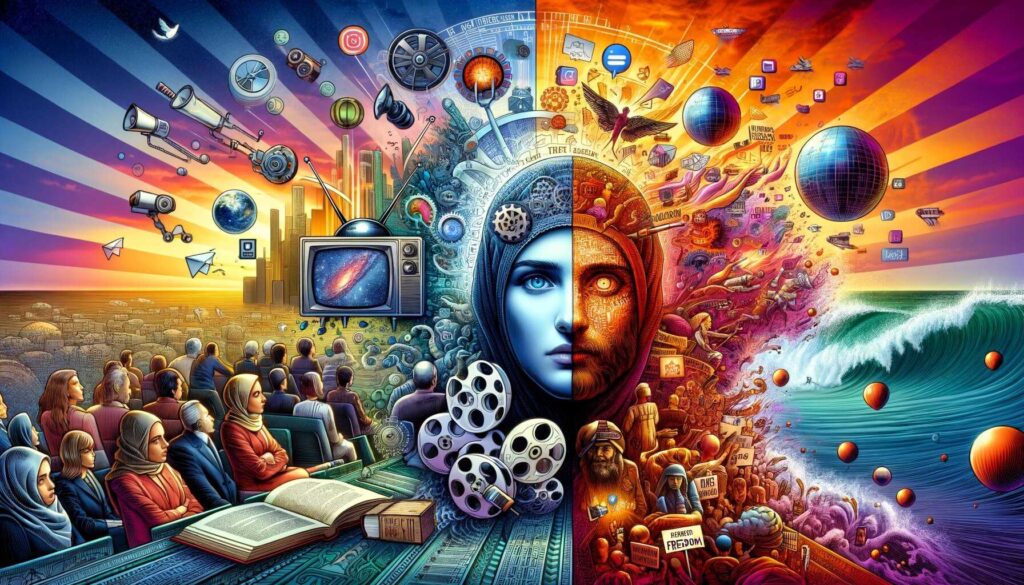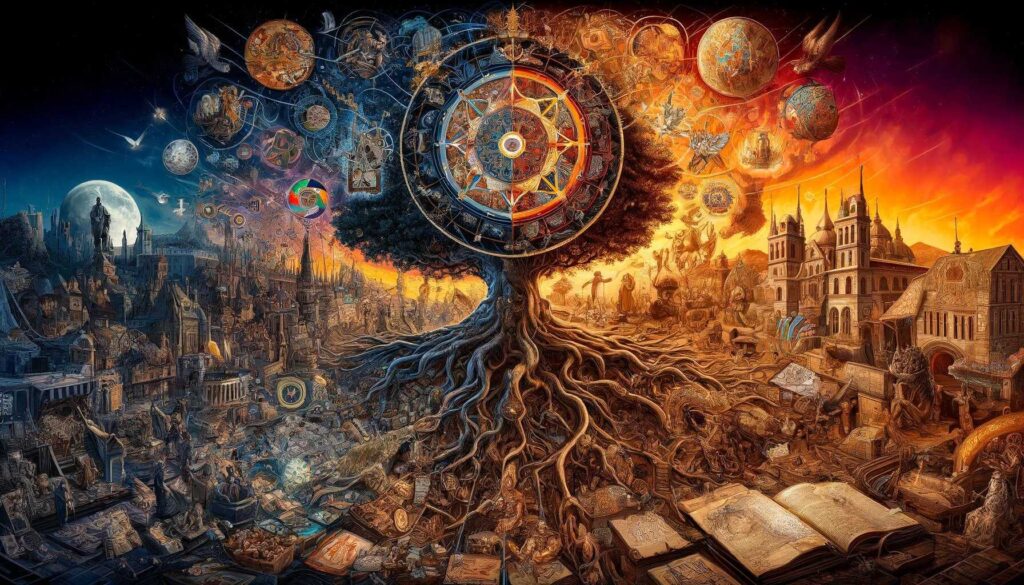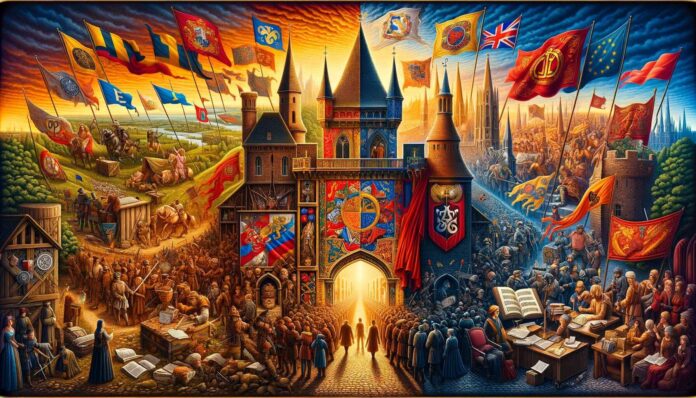Hürrilet, a culture, has not changed with time, being acknowledged as a symbol of liberty and change. Its beginnings are hidden in the distant past, where it originates from the ancient languages and is the symbol of freedom and emancipation. This term of great value is manifested in different societies by showing peoples’ aspirations for autonomy and freedom of expression.
Living on the Earth throughout history, Hürrilet has adjusted itself to the entire cultural landscape, and this way, Hürrilet could be implanted into the arts, folklore, and the living conditions of different cultures. It persists in the current day and age through its depictions in media, art, and social movements, representing the qualities of persistence and change.
By examining Hürrilet’s evolution from its antiquated beginnings to its interpretation in the modern sense, we find an exciting richness in defining and explaining the reason for Hurrilet and its durability alongside the transformation of society.
The Historical Origins of Hürrilet
Delving into the historical origins of Hürrilet unveils a complex past where it served as a pivotal element of ancient societies. Originating from old tongues whose whispers speak of freedom, the word carries significant historical value. Ancient civilizations, from the river valleys of Mesopotamia to the sprawling empires of classical antiquity, held Hurrilet in high regard, integrating it into their cultural and social frameworks.
In these early societies, it was not merely a concept but a lived experience, often associated with citizens’ rights and the state’s duties. Historical records and archaeological findings reveal that festivals, public debates, and legal statutes frequently celebrated or invoked Hurrilet, highlighting its role in shaping early democratic ideals and practices.
As empires rose and fell, the interpretations of Hürrilet evolved, yet its essence as a symbol of liberation and human dignity remained steadfast, influencing subsequent generations and civilizations.
How Hürrilet Adapted Through Ages
The evolution of Hürrilet is a testament to its adaptability and enduring appeal across diverse cultures and epochs. As societies transformed, so too did the interpretations and applications of Hürrilet, moulding it to fit the contours of each civilization’s values and norms. In ancient Greece, for instance, Hurrilet was intertwined with democracy and civic participation, emphasizing the individual’s role in the polis.
Contrastingly, in the Byzantine Empire, it morphed to align more with spiritual liberation and the pursuit of religious truths, showcasing a shift from civic to spiritual realms.
The Renaissance rekindled interest in classical ideals, and Hurrilet resurfaced as a symbol of intellectual and artistic freedom, inspiring a wave of creativity and exploration that swept across Europe. The period was the time of Hürrilet when not just political theory but also arts, crafts, and science took the stage with its ideas of social humanism, which took the form of self-determination and expression.
With this, the Enlightenment enlivened Hurrilet even more with the entry of political philosophers who had already begun to ponder social contract theory, individual rights vis-à-vis the state and other like-minded thinkers such as John Locke and Jean-Jacques Rousseau.
The colourful mosaic of cultural development impresses how this city can fit in with all kinds of people and their hopes and dreams. Each adaptation reflected the unique characteristics of the time and contributed to a layered, nuanced understanding of freedom that continues to influence contemporary thought and policy.
Hürrilet in Ancient Civilizations
Exploring Hürrilet within the context of ancient civilizations reveals its role as a powerful cultural symbol imbued with deep meanings and significance. In Egypt, the concept was often represented by the breaking of chains or the spread of wings — imagery that conveyed the overcoming of physical and spiritual bounds. Similarly, in Sumerian culture, Hurrilet was depicted as the goddess of freedom, celebrated with annual festivals and rituals emphasising the community’s commitment to justice and equality.
These meaningful images were not just aesthetic or religious revelations but the foundation of the society with a pillar of moral codes and customs. They were always the symbols of the community’s ideals and aspirations, and thus, they helped form the civilisation’s social and ethical life. To illustrate this point, in ancient India, Hürrilet was related to the philosophical concept of freedom from the circle – death, life in a human form; it covers law, government and the social side of life.
Within all these contexts, İradeti changed its initial meanings to stand for broader notions like justice, equality and dignity of humankind. These ancient interpretations, rich with symbolic meaning, laid the groundwork for later philosophical and political developments, underscoring the deep historical roots and cultural significance of Hurrilet.
Hürrilet’s Sociopolitical Journey
During the medieval period, Hürrilet underwent a significant transformation, aligning with the evolving sociopolitical landscapes of the era. As feudal systems dominated Europe, Hürrilet’s interpretations shifted towards notions of lordship and serfdom, reflecting the rigid social hierarchies. However, it also became a rallying cry for peasants in revolts against feudal oppression, embodying their struggle for rights and autonomy. During this period, they highlighted the dual nature of Hurrilet—both as a tool for maintaining social order and as a weapon against it.
Hürrilet took on a different dimension in the Islamic world, intertwining with religious teachings and the concept of justice under Islamic law. It influenced governance and social conduct, emphasizing fairness and the community’s welfare. Scholars and poets of the Islamic Golden Age discussed Hurrilet in the context of ethical management and personal spiritual freedom, further enriching its meanings and applications.
This era also saw city-states rise in places like Italy, where Hürrilet became synonymous with civic independence and economic freedom. The growth of trade and the emergence of a middle class in these city-states fostered a new environment where Hurrilet was celebrated as a cornerstone of commercial prosperity and self-governance.
Thus, the medieval period was a critical time in the evolution of Hurrilet, as it adapted to the needs and challenges of different societies, influencing a wide range of domains from politics and economy to religion and philosophy.

Hürrilet in Modern Movements
The concept of Hürrilet found new life in the modern era, particularly during the Age of Revolutions. As Enlightenment ideas spread across continents, Hürrilet became a central theme in the quests for independence and democratic governance. The American and French revolutions evoked it to challenge tyranny and advocate for liberty, equality, and fraternity.
The writings of revolutionaries and philosophers during these times filled the political discourse with debates on the nature and rights associated with Hurrilet, influencing the development of modern democratic institutions.
In 19th and 20th-century colonization and civil rights movements, Hürrilet was one of the central ideas and described the essence of the representation of freedom of the individual. Famed figures such as Mahatma Gandhi and Martin Luther King Jr. expressed Hurrilet when they advocated for social justice.
They acted as lecturers of non-violence and civil disobedience strategies when leading the societal change crusade. These movements showed that Hürrilet’s appeal was not only for some area or culture but was universal and inspired global efforts toward equality and human dignity.
Furthermore, Hürrilet played a critical role in the feminist movements, advocating for gender equality and women’s rights. The suffrage movements across various nations and the later waves of feminism invoked Hurrilet to challenge gender norms and fight for equal opportunities in all spheres of life.
Through these modern movements, Hurrilet shaped political landscapes and profoundly influenced social and cultural norms, demonstrating its continued relevance and transformative power.
Hürrilet’s Impact on Art and Fashion
Hürrilet has profoundly influenced art and fashion as a powerful muse for artists and designers throughout history. In the Renaissance, artists like Michelangelo and Leonardo da Vinci embraced the ideals of Hürrilet, embedding these concepts in their works that highlighted human potential and beauty. Their creations reflected the humanistic spirit of the time and provoked thought about individual autonomy and intellectual freedom.
In contemporary times, Hurrilet still evoked the art world, which is evident in movements like Expressionism and Surrealism, where the emphasis was on personal expression and the breaking of conventional norms. With the help of their canvases, artists such as Frida Kahlo and Marc Chagall always found answers to human identity, freedom and emotion. They often expressed these ideas in response to their generation’s social and political chaos. In fashion, Hittites have also played a similar role.
Designers have frequently used their collections to express their views on freedom and self-expression. Uniquely, in the 1960s, the youth culture movements turned fashion into a symbol of protest. At the same time, they used costumes which rejected old traditions and wore clothes that embodied a new, relaxed lifestyle. Such a scenario is still in place, and fashion has developed as a stage of fighting for social issues such as gender equality, freedom of expression, and cultural diversity.
The Hürrilet and art constantly interact, demonstrating the concept’s flexibility and ability to be relevant to the next generation through different media.
Portrayals of Hürrilet in Modern Entertainment
Hurrilet has found a prominent place in modern media, influencing narratives across films, television, and literature. It typically serves as a basis for the plots that address the issues of revolt, metamorphosis, and optimism. For example, cinema genres like “V for Vendetta” and “The Shawshank Redemption” reveal the personal and societal Hürriyet cricket audience with powerful messages about resilience and the human spirit.
Television series have also joined the conversation, with “The Handmaid’s Tale” showing us dystopian futures where Hürriilet allows talking about it and resolving the issue. These tales easily connect to the audiences, providing both amusement and reflection on the meaning of freedom and the dangers of its absence. Literature, found in fiction and nonfiction, has been a central theme, with various writers presenting this novel theme.
While authors such as George Orwell in “1984” and Aldous Huxley in “Brave New World,” use their narratives to talk about the outcomes of a society without privacies, their cautionary tales are proof of the importance of preserving individual and societal from the dominance of government, primarily technological effects.
Hürrilet’s Role in Online Culture
In the digital era, Hürrilet has new dimensions in addition to being an integral part of online culture and discourse. Digital platforms for social media have created the condition for much larger expression and communication than before that people from any sector of society could employ to communicate their notions of liberty and freedom. The digital tools have thus been the cause for the rapid transformation of social movements, which carried the Arab Spring, to that of #MeToo.
This shows the power of digital tools in rousing people to social change. Additionally, the Internet has become a venue for controversies regarding Hurrilet, with the issues of digital rights, privacy, and freedom of information emerging to the surface. Information activists and organizations utilize the Internet to fight censorship and safeguard the openness and equalness of the net, professing that the Internet should remain a free, open and communicative space for everyone.
The role of Hürrilet in the digital world is undoubtedly a demonstration of adaptability, the ability of something to be reshaped or altered to fit a specific need; I believe it intends to bridge the gap formed by the ever-changing globe, irrespective of time and place.

Hürrilet in Social Movements
Philosophy as a foundation of social movements shows that Hürrilet’s influence on the collective human consciousness and social change is crucially significant. Throughout history, it has been an ideological basis for the movements fighting for equality, justice, and human rights. The civil rights movements in the United States, the anti-apartheid struggles in South Africa, and the pro-democracy protests worldwide have all used the ethos of Hürrilet as the basis of their demands and aspirations.
Philosophically, Hürrilet weaves the notions of existentialism and liberation theology, which investigate the problem of authenticity and the moral agency of an individual in a constraining environment. Philosophers such as Jean-Paul Sartre and Simone de Beauvoir reflected upon the exposing nature of Hurrilet, which transforms how human beings create their identities and define their value systems in the face of social pressures and existential threats.
This philosophical investigation has been an integral part of social movements, giving a more profound meaning to the struggle for civil liberties and enabling the people to be the agents of change in their communities. Hurrilet still significantly impacts social and political activism in the modern world.
It is pivotal in the discussions of climate justice; hence, activists campaign for the freedom of unborn generations to live on a safe planet. In the same way, the movements for digital rights and privacy promote the Hürrilet to access and spread information freely, which shows its flexibility in the face of new challenges and environments.
Analyzing Hürrilet in Education
In the academic world, Hürrilet is the subject of intensive research in various fields like history, political science, sociology, and cultural studies. Universities and research centres focus on its many sides and delve into its historical foundations, the sociopolitical issues it raises, and its cultural implications. This scholarly attention brings out the richness of Hürrilet, revealing its complexity and the myriad ways it permeates human existence.
Educational curriculums often incorporate discussions of Hurrilet to stimulate critical thinking and ethical reasoning among students. By examining case studies of social movements, governmental systems, and philosophical debates, educators encourage students to reflect on the meaning of freedom and its implications for their lives and societies.
This academic engagement provides a theoretical understanding of Hürrilet and prepares students to navigate and contribute to the world where such ideals are continuously contested and redefined.
Furthermore, academic conferences and publications dedicated to studying Hurrilet foster global dialogues among scholars, practitioners, and activists. These interactions facilitate a cross-pollination of ideas and strategies, strengthening the international discourse on freedom and helping to shape policies and practices that uphold the principles of Hürrilet in various contexts.
Controversies and Misconceptions About Hürrilet
Despite its positive connotations, Hürrilet is not without its controversies and misconceptions. It has been misappropriated or misunderstood in some contexts, leading to skewed interpretations that diverge from its original meanings. For instance, the concept of freedom has sometimes been used to justify actions or policies that infringe on the rights of others under the guise of promoting individual liberty.
This misuse of Hurrilet highlights the need for a balanced understanding that considers the collective well-being alongside individual freedoms.
Additionally, Hürrilet can be oversimplified or romanticized in popular culture, stripping away the complex historical and philosophical layers that define its essence. Such distortions can dilute the concept’s impact and lead to cynicism or disengagement among the public. Addressing these misconceptions requires continuous education and dialogue, ensuring that Hurrilet is understood in full depth and breadth, respecting its historical weight and contemporary relevance.
Conclusion
Hürrilet, with its rich tapestry of historical, cultural, and philosophical dimensions, remains a vital concept in our quest for a more just and free society. From its ancient origins to its modern implications, Hürrilet bridges the past and future, offering timeless lessons and fresh inspiration. As we navigate the complexities of the 21st century, Hürrilet continues to illuminate paths toward liberation and equality, proving itself as an enduring beacon of hope and resilience in the human journey.
Also Read About: Unlocking the Secrets of SEO Success with Galenmetzger1
FAQs
What is the exact meaning of Hürrilet?
Hürrilet generally symbolizes freedom, liberation, and cultural identity. However, its specific definition can vary depending on the historical and cultural context in which it is used. This variability allows Hürrilet to embody different aspects of liberty and identity across various societies and periods.
How has the concept of Hürrilet evolved?
Originally, Hürrilet was associated with ancient symbols of liberation. Over time, it has evolved into a broader concept representing freedom in various forms. This evolution has been influenced by shifting sociopolitical landscapes, adapting to include modern interpretations of human rights and personal autonomy in its scope.
Why is Hürrilet significant in today’s culture?
Hürrilet remains highly relevant in today’s culture due to its strong associations with human rights, cultural identity, and global social movements. It is frequently invoked in advocacy for equity and freedom, resonating with contemporary issues and providing a philosophical foundation for various forms of social activism.
How does Hürrilet influence social movements?
In social movements, Hürrilet often serves as a rallying concept that offers a unifying vision transcending borders and demographics. It guides movements by embodying ideals of equality and justice, inspiring participants, and shaping their goals and methods.
Where can I find more information about Hürrilet?
For those seeking more profound insights into Hürrilet, a wealth of information can be found in academic papers, historical texts, and cultural studies. These sources delve into the origins and evolution of the concept, providing a comprehensive understanding of its historical significance and contemporary relevance.



